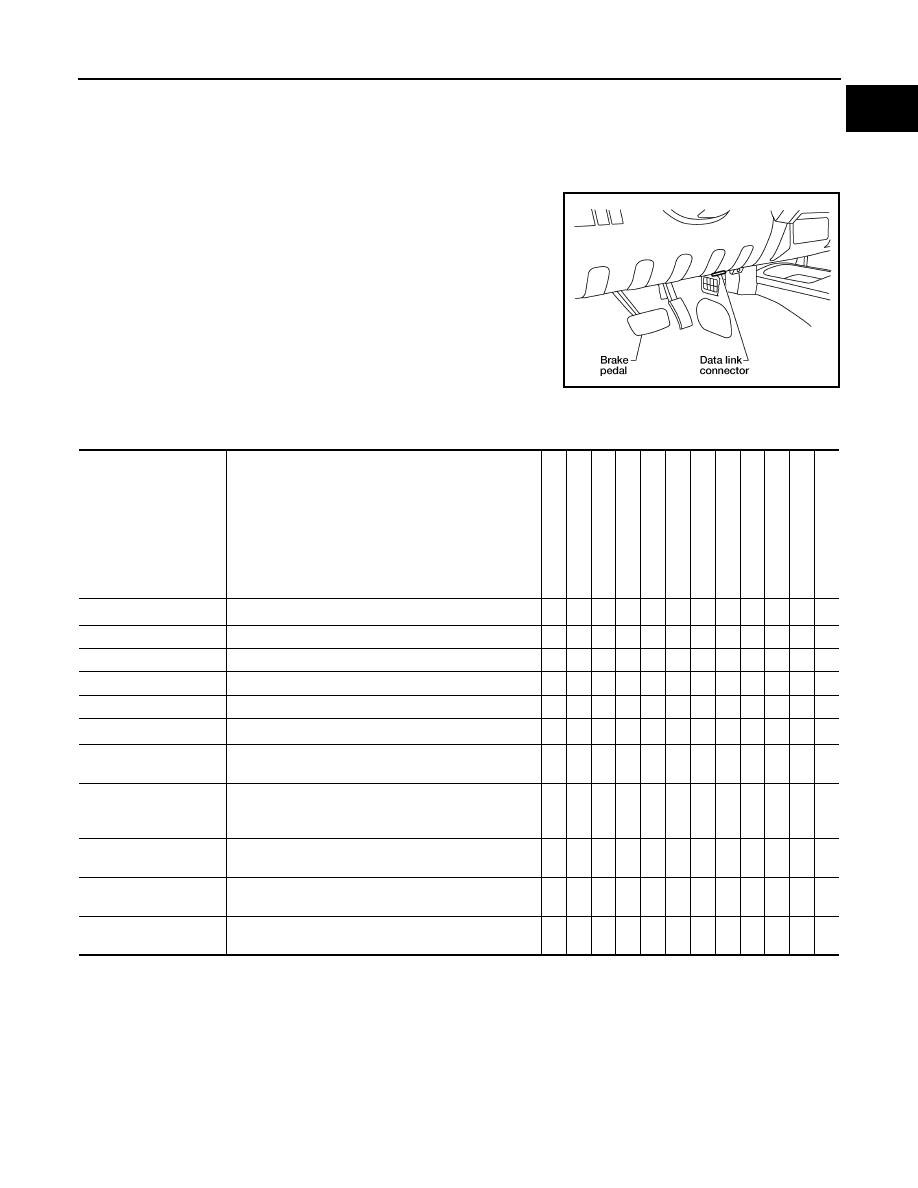Nissan Pathfinder (2012 year). Manual - part 399

CONSULT CHECKING SYSTEM
GI-45
< BASIC INSPECTION >
C
D
E
F
G
H
I
J
K
L
M
B
GI
N
O
P
CONSULT CHECKING SYSTEM
Description
INFOID:0000000007359095
NOTE:
This vehicle is diagnosed using CONSULT-III plus.
• When CONSULT is connected with a data link connector equipped
on the vehicle side, it will communicate with the control unit
equipped in the vehicle and then enable various kinds of diagnos-
tic tests.
• Refer to CONSULT-III plus Operation Manual for more information.
Function and System Application
INFOID:0000000007359096
x : Applicable
1: With 4WD
2: With Intelligent Key
3: Except base audio
4: With color display
5: With automatic drive positioner
6: With ATX14B transfer case
BBIA0538E
Direct Diagnostic Mode
Description
ALL MODE
A
W
D/4W
D
1
ABS
INTELLI
G
ENT
KEY
2
IP
DM E/
R
MUL
T
I A
V
3
HV
AC
4
BCM
TRANSMISSION
AIR BAG
AUT
O
DRIVE
POS.
5
METER/M
&
A
ENGINE
ECU identification
The ECU part number is displayed.
x
6
x
x
-
x
x
x
x
x
x
-
x
Self Diagnostic Result
The ECU self diagnostic results are displayed.
x
x
x
x
x
x
x
x
x
x
x
x
Data Monitor
The ECU input/output data is displayed in real time.
x
x
x
x
x
x
x
x
x
x
x
x
Active Test
The ECU activates outputs to test components.
-
x
x
x
-
-
x
-
-
x
-
x
Cause of Warning Lamp States the reason the air bag warning lamp is ON.
-
-
-
-
-
-
-
-
x
-
-
-
Work support
The settings for ECU functions can be changed.
x
6
x
x
-
-
-
x
-
-
x
-
x
DTC Work Support
The status of system monitoring tests and the self di-
agnosis status/results can be confirmed.
-
-
-
-
-
-
-
x
-
-
-
x
Configuration
• The vehicle specification can be read and saved.
• The vehicle specification can be written when re-
placing ECU.
-
-
-
-
-
-
x
-
-
-
-
-
TROUBLE DIAG
RECORD
Self diagnostic history and trouble diagnosis records in
ECU are displayed.
-
-
-
-
-
-
-
-
x
-
-
-
CAN Diagnosis
This mode displays network diagnostic results of CAN
communication using a diagram.
x
x
x
x
x
x
x
x
x
x
x
x
CAN Diag Support Mntr
The result of transmit/receive diagnosis of CAN com-
munication is displayed.
x
x
x
x
x
x
x
x
-
x
x
x
August 2012
2012 Pathfinder